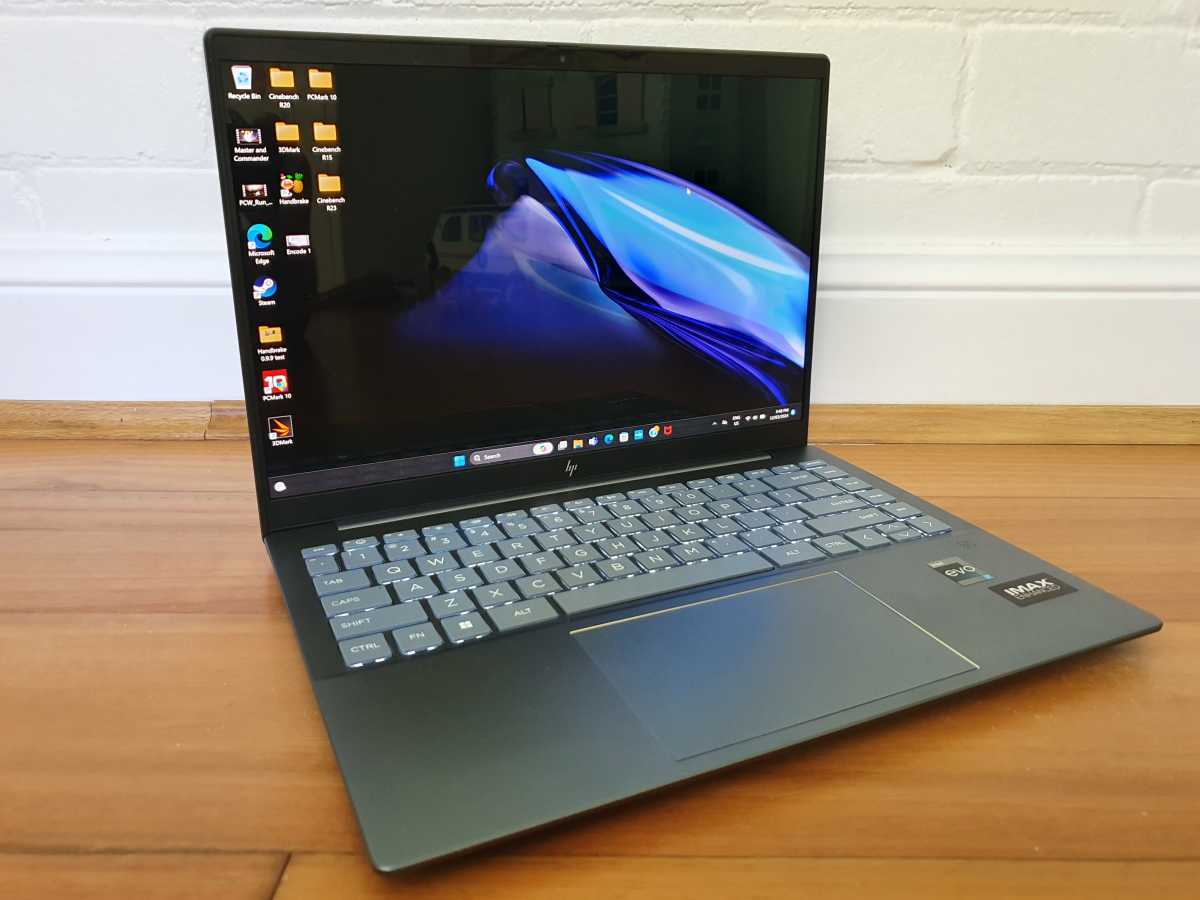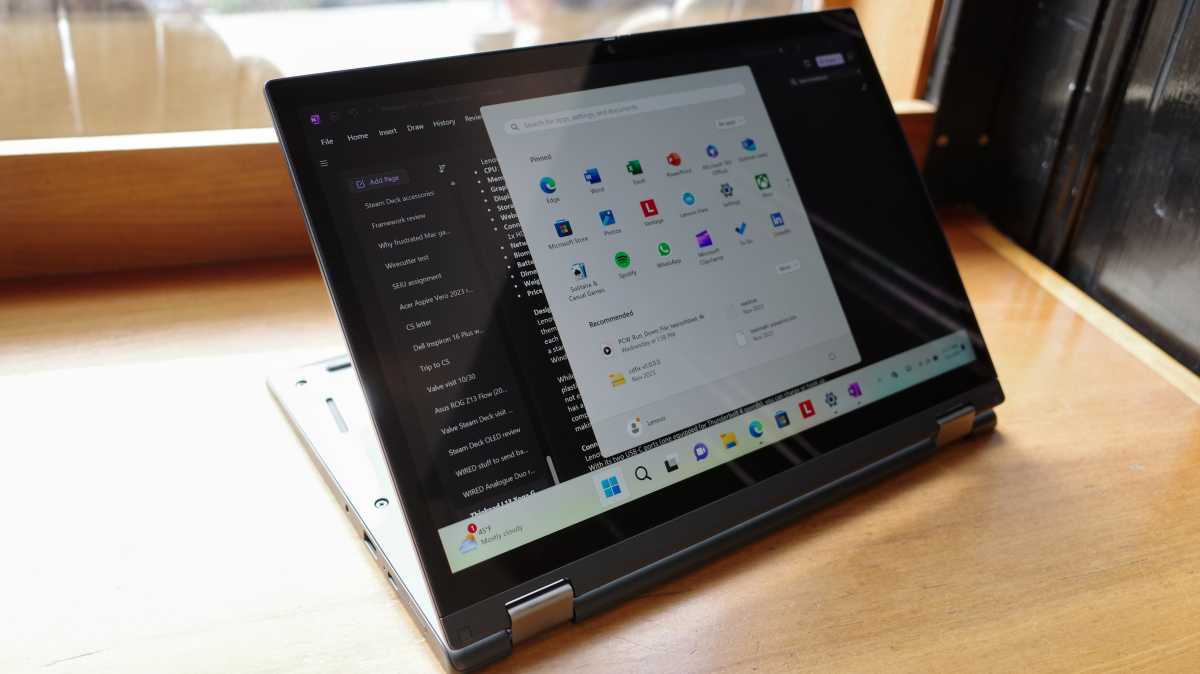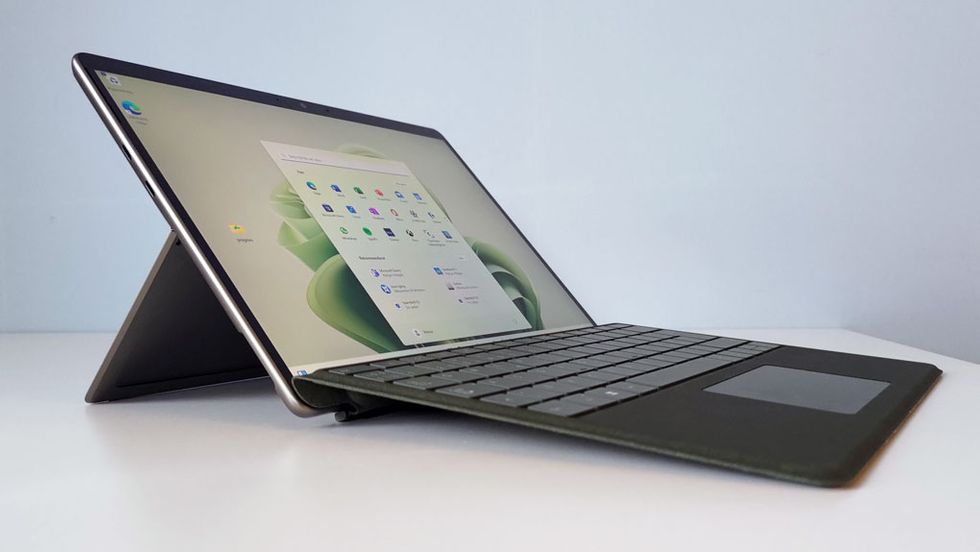Until about 15 years ago, the term “laptop” meant one thing: a portable PC that unfolds to reveal a screen on one half and a keyboard on the other.
But with the launch of Apple’s iPad in 2010, PC vendors’ subsequent push into touchscreen designs, and the continued maturation of the PC market, the definition of “laptop” has broadened. Choosing a laptop isn’t just about tech specs and build quality. It’s now about the fundamental shape of the thing.
Let’s try to break it all down with a taxonomy for every kind of laptop you can buy today.
Further reading: PCWorld’s top laptop recommendations
Clamshell laptops

Dominic Bayley / IDG
Dominic Bayley / IDG
Dominic Bayley / IDG
The most conventional category of them all, clamshells do not flip, bend, or transform. They merely focus on letting you work with a keyboard and trackpad (or mouse) with the most efficient designs possible.
Even here, though, we can define a handful of subcategories:
Touchscreen laptops: These allow you to manipulate the screen directly while still resembling a regular laptop. Some regular laptops offer a touchscreen as an optional upgrade.
Ultraportable laptops: High-end consumer laptops with premium designs focused on portability. These may be informally known as “Ultrabooks” — stemming from Intel’s early-2010s marketing push against the MacBook Air — or just “thin-and-light” laptops. HP’s Dragonfly G4 is our current top pick in this subcategory.
Gaming laptops: Clamshells with dedicated graphics cards and other gaming-centric features, such as customizable keyboard lighting, unique cooling solutions, and flashy designs. You know them when you see them. Alienware’s m16 R2 is our top pick right now for a gaming laptop.
Desktop replacements: Heavier laptops with larger screens and powerful CPUs, with battery life and portability as afterthoughts. These tend to have some overlap with gaming laptops, as seen in our best laptops for video editing.
2-in-1 laptops
Beyond the basic clamshell, many PC makers offer laptops that can transform into tablets for drawing, taking notes, reading ebooks, and playing touchscreen games. While there are many kinds of 2-in-1 laptops, they mainly fall into two camps: convertibles and detachables.
Convertibles

IDG / Brendan Nystedt
IDG / Brendan Nystedt
IDG / Brendan Nystedt
With convertible laptops, the keyboard section is permanently connected to the screen, but it folds out of the way so you can lay the screen flat in your lap or on a table. While convertibles are heavier and bulkier than detachable laptops, they feel more like traditional clamshells when used in laptop mode. (They do, however, tend to be bulkier than non-convertible laptops.)
Within the convertible subgenre, there are a couple of subtypes:
360-degree hinge convertibles have screens that fold all the way around underneath the keyboard — a form made famous by Lenovo’s Yoga line.
Easel-style convertibles have pivoting screens that lay down on top of the keyboard. These are rarer, but Microsoft’s Surface Laptop Studio and HP’s Elite Folio are notable examples.
Detachables

Mattias Inghe
Mattias Inghe
Mattias Inghe
With detachable laptops, the screen portion pulls apart from the keyboard and becomes a standalone tablet. This gives you an uncompromised tablet experience, but with some trade-offs on the laptop front: Because all the computing components must sit behind the screen, it can be top-heavy and may need its own kickstand, so it’s more cumbersome to keep on your lap. Detachables may also be less performant than standard clamshells, whose components can use all the space under the keyboard to dissipate heat.
Detachables themselves fall into a few subcategories:
Detachables with kickstands, such the Microsoft Surface Pro and Dell’s Latitude 7320 Detachable, have lightweight keyboard covers that snap magnetically to the tablet portion.
Detachables with hinges, such as Microsoft’s Surface Book and Lenovo’s forthcoming ThinkPad Plus Gen 5 Hybrid, look more like traditional laptops when docked. (The latter actually has a Windows PC in the keyboard base and Android in the screen portion.)
Exotics

Mattias Inghe
Mattias Inghe
Mattias Inghe
Want something a little more unusual? Laptop makers have started experimenting with new kinds of laptops that involve multiple screens or foldable display tech.
These devices tend to be much pricier than traditional laptops, and they can sometimes feel like solutions in search of a problem. It’s not unusual for laptop makers to abandon or overhaul their ideas after a generation or two, so these experimental laptops are best-suited for folks who don’t mind living on the bleeding edge.
Let’s break down the different types:
Foldable laptops consist of a single, flexible display, whose two halves offer a laptop-like surface when partially folded or a larger, freestanding display when unfolded. A separate keyboard and trackpad deck allows for interaction without relying on the touchscreen. HP’s Spectre Foldable and Lenovo’s ThinkPad X1 Fold are recent examples.
Dual-screen laptops replace the usual keyboard section with a second screen, perhaps with an attachable keyboard and trackpad deck for input. Standing the screens up and using the keyboard separately approximates the feel of having two monitors. Asus did a great job on this concept with the 2024 ZenBook Duo.
Laptops with extra screens can supplement the main screen with extra information, as seen with Asus’ ROG Zephyrus Duo 16.
Twistable laptops have a screen that rotates around to provide extra functionality on the other side. An example is the Lenovo ThinkBook Plus Gen 4, which has an OLED screen on one side and E-ink on the other, with the latter aimed at notetaking, reading, and focused writing.
>>> Read full article>>>
Copyright for syndicated content belongs to the linked Source : PCWorld – https://www.pcworld.com/article/2277873/laptop-formfactor-guide.html































